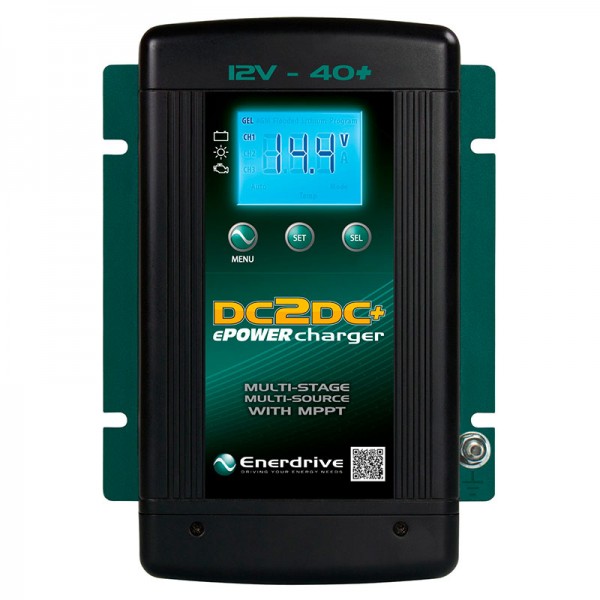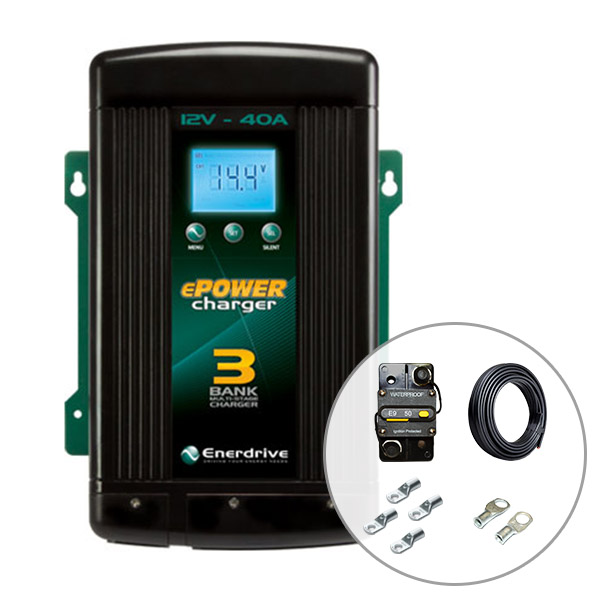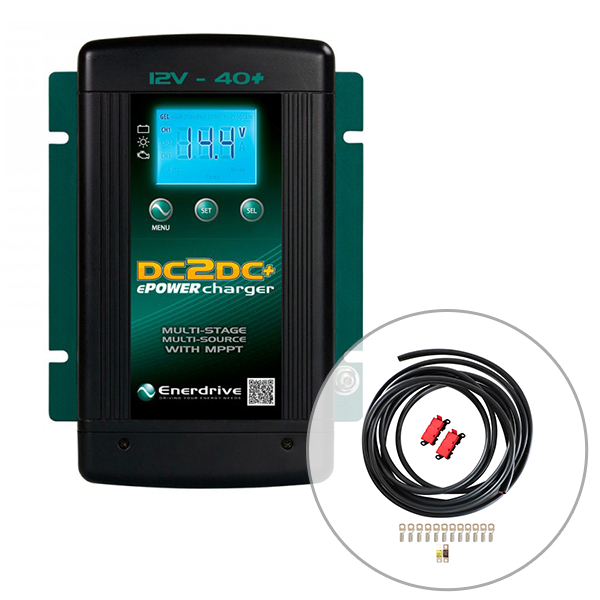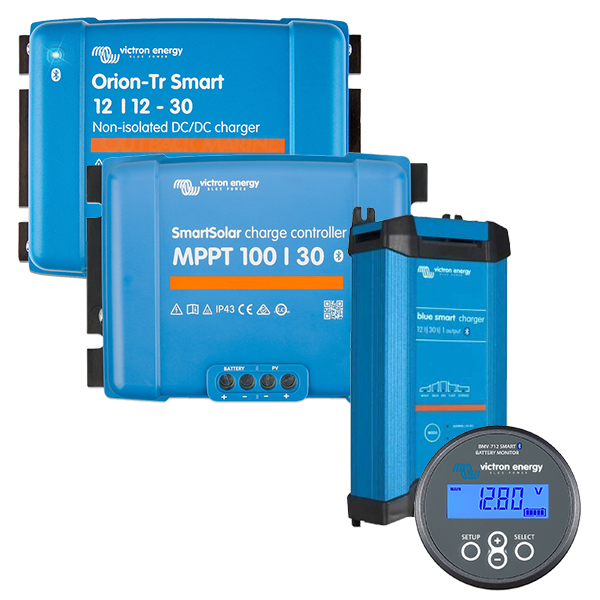If you want to live or travel off-grid, you need to get one thing right first: the right size battery charger. So, how do you know which size charger you need?
Work out your charger size based on the following factors:
-
1. Battery Type
For lead acid deep cycle batteries (AGM or Gel), ideally you want a charger with an Amp output of 10-20% of the total battery bank. So, for a 100Ah battery, you would buy a 20Amp charger.
Different battery types have different requirements for charging. That's because the battery chemistry reacts differently when being charged.
For Lithium and Lead Crystal batteries, the charger to battery ratio is based on 30% for maximum performance and lifespan. That means a 200Ah requires a 60Amp charger.
2. Charge Profile
This includes the Maximum Charge Voltage and Maximum Charge Current.
The Maximum Charge Voltage is the highest acceptable charge voltage the battery can take to charge.
This Maximum Charge Current is highest charge current that the battery can receive when charging.
Ensure your battery charger profile does not exceed the maximum parameters for charge current and charge voltage. If not, you can severely reduce the battery's health and life. The same can be said for minimum charge requirements. These details can all be found on the My Generator product page specifications of any good quality battery.
The Recommended Charge Current will be somewhat lower than the advertised maximum. Charging at the recommended current will ensure your battery performs well for as long as possible. Correct regulated charging is the best way to protect your investment.
For example, the Enerdrive Btec 200Ah Lithium battery has a maximum charge voltage of 15.5V and a maximum charge current of 150A @ 25°C for 30mins. The Recommended Charge Current for maximum Life is ? 60A
-
3. Multiple Charging Sources
Most RV's have multiple charging sources: mains, solar and vehicle charging. If you have the ability to run multiple charging sources at that same time, a general rule of thumb is:
-
35% of the battery capacity combined for Lead Acid/AGM
-
30% for Lead Crystal
-
60% for Lithium
The good news is a lot of chargers have the ability to dial down the current output of the charger.
Take the Enerdrive ePOWER range. Both the AC and DC2DC chargers in this range have adjustable current outputs. This allows for installing a bigger charger at the start, which is ideal if you think you may increase your battery capacity or number of battery banks at a later date. No need to buy another charger down the road and waste money. Plus with this range you can also select the type of battery you have - bonus!
Another thing to note, is that when powering your battery charger from a generator you need to ensure that the battery chargers power draw doesn't overload the capacity of the generator. For example, an Enerdrive ePower 60Amp battery charger can be dialled down to allow you to run it off a small 1000W inverter.
-
4. System Voltage
Your charger output needs to be suitable for your system voltage.
If you have a 12V system, choose a 12V battery charger.
For a 24V system, you need a 24V battery charger. You get the gist.
-
Different Types of Battery Chargers:
-
AC to DC
-
AC to DC chargers are designed to charge your battery from a generator or mains power. So, rather than using your generator's 12V supply, use a regulated charger and plug it into the AC source on the generator.
Why? Because it provides faster charging and wastes less fuel. That's a big benefit if you're in a remote camp spot, hours from the nearest fuel stop!
My Generator's Top Picks:
-
DC to DC
-
A DC2DC battery charger is like a smart charger for your 12V system. The best thing about a DC to DC charger is that it will boost charge into your battery while you're driving. It also acts as an isolator, so your starter battery doesn't go flat when you stop for a while.
My Generator's Top Picks:
-
Victron Orion-Tr Smart 24/12-30A (360W) Non-isolated DC-DC charger
-
BMPRO MiniBoostPro 30Ah 12V DC to DC Battery Charger with Solar Input
-
For more details on AC and DC Battery Chargers check out our Camping Battery Chargers Buyer's Guide
-
Bundle & Save:
-
Any inbuilt DC to DC or AC to DC battery charger will require quality cabling and fuses as part of your installation. It is also important to know that you won't have any voltage drop from the charger to the batteries, therefore choosing the correct size cable is very important!
To make life easy, we have created various charger and cabling bundles ready to purchase. Enerdrive offer two very popular bundles:
Enerdrive 40A AC to DC Battery Charger with Installation Kit:
This kit includes:
-
40Amp ePower Battery Charger
-
16mm ² Twin Core Cable 1.5 Meters
-
50 Amp Manual Reset Circuit Breaker
-
16MM - 6MM Diameter Cable Lugs x2 Pieces
-
16MM - 8MM Diameter Cable Lugs x4 Pieces
Enerdrive 40A DC to DC Battery Charger with Midi Fuse Installation Kit:
This kit includes:
-
40Amp ePower Battery Charger
-
16mm ² Twin Core Cable 6 Meters
-
16MM - 8mm Diameter Cable Lugs x12 Pieces
-
2 x Enerdrive Modular Fuse Holder (Fuse Module)
-
1 x 60A Blade Fuse
-
1 x 70A Blade Fuse
We also have charging and monitoring bundles available to ensure you can protect your expensive batteries with the right size equipment.
One of our most popular options is the Victron 30A Battery Management System Bundle which includes a IP22 Smart Charger, 30A DC to DC Charger, 30A Solar Charge Controller and a BMV-712 Battery Monitor.
-
Need more advice on choosing the right battery charger size for your off-grid set up? Our team is ready to help. Get in touch!
-
DISCLAIMER* Please note, this advice is general in nature and we strongly recommend consulting the product manual and where relevant, a professional installer.
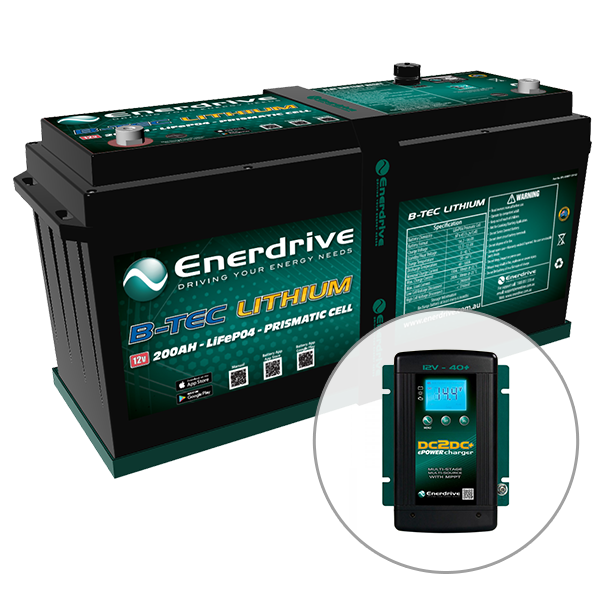
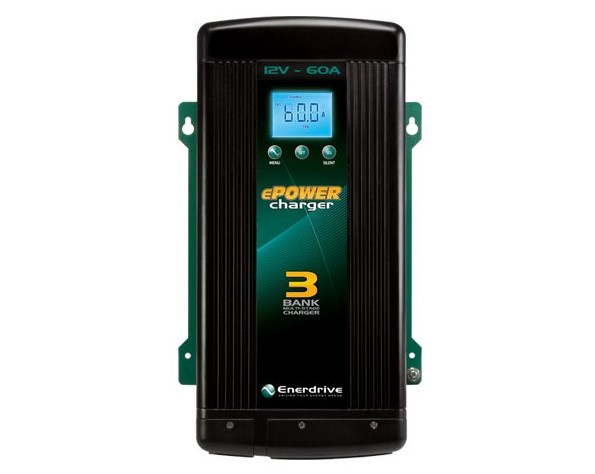
.png)
